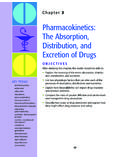Transcription of BIOPHARMACEUTICS CLASSIFICATION SYSTEM-BASED …
1 1 INTERNATIONAL COUNCIL FOR HARMONISATION OF TECHNICAL REQUIREMENTS FOR PHARMACEUTICALS FOR HUMAN USE ICH HARMONISED GUIDELINE BIOPHARMACEUTICS CLASSIFICATION SYSTEM-BASED BIOWAIVERS M9 Final version Adopted on 20 November 2019 This Guideline has been developed by the appropriate ICH Expert Working Group and has been subject to consultation by the regulatory parties, in accordance with the ICH Process. At Step 4 of the Process the final draft is recommended for adoption to the regulatory bodies of ICH regions. 2 M9 Document History Code History Date M9 Adopted by the Regulatory Members of the ICH Assembly under Step 4 (document dated 16 November 2019).
2 20 November 2019 M9 Endorsement by the ICH Assembly under Step 2 and release for public consultation. 7 June 2018 Legal notice: This document is protected by copyright and may, with the exception of the ICH logo, be used, reproduced, incorporated into other works, adapted, modified, translated or distributed under a public license provided that ICH's copyright in the document is acknowledged at all times. In case of any adaption, modification or translation of the document, reasonable steps must be taken to clearly label, demarcate or otherwise identify that changes were made to or based on the original document.
3 Any impression that the adaption, modification or translation of the original document is endorsed or sponsored by the ICH must be avoided. The document is provided "as is" without warranty of any kind. In no event shall the ICH or the authors of the original document be liable for any claim, damages or other liability arising from the use of the document. The above-mentioned permissions do not apply to content supplied by third parties. Therefore, for documents where the copyright vests in a third party, permission for reproduction must be obtained from this copyright holder. i ICH HARMONISED GUIDELINE BIOPHARMACEUTICS CLASSIFICATION SYSTEM-BASED BIOWAIVERS M9 ICH Consensus Guideline TABLE OF CONTENTS 1.
4 1 Background and Objective .. 1 Scope .. 1 2. BIOPHARMACEUTICS CLASSIFICATION OF THE drug 2 solubility .. 2 Permeability .. 3 3. ELIGIBILITY OF A drug PRODUCT FOR A BCS-BASED BIOWAIVER .. 4 Excipients .. 4 In vitro dissolution .. 6 4. DOCUMENTATION .. 8 5. GLOSSARY .. 9 ANNEX I: CACO-2 CELL PERMEABILITY ASSAY METHOD CONSIDERATIONS .. 10 ANNEX II: FURTHER INFORMATION ON THE ASSESSMENT OF EXCIPIENT DIFFERENCES .. 13 ICH M9 Guideline -1- 1. INTRODUCTION Background and Objective Two drug products containing the same drug substance(s) are considered bioequivalent if their bioavailabilities (rate and extent of drug absorption) after administration in the same molar dose lie within acceptable predefined limits.
5 These limits are set to ensure comparable in vivo performance, , similarity in terms of safety and efficacy. In in vivo bioequivalence studies, the pivotal pharmacokinetic parameters AUC (area under the concentration time curve) and Cmax (maximum concentration), are generally used to assess the rate and extent of drug absorption. The BCS ( BIOPHARMACEUTICS CLASSIFICATION System)-based biowaiver approach is intended to reduce the need for in vivo bioequivalence studies , it can provide a surrogate for in vivo bioequivalence. In vivo bioequivalence studies may be exempted if an assumption of equivalence in in vivo performance can be justified by satisfactory in vitro data.
6 The BCS is a scientific approach based on the aqueous solubility and intestinal permeability characteristics of the drug substance(s). The BCS categorizes drug substances into one of four BCS classes as follows: Class I: high solubility , high permeability Class II: low solubility , high permeability Class III: high solubility , low permeability Class IV: low solubility , low permeability This guidance provides recommendations to support the BIOPHARMACEUTICS CLASSIFICATION of drug substances and the BCS-based biowaiver of bioequivalence studies for drug products. The BCS-based biowaiver principles may be applied to bioequivalence purposes not explicitly specified in the guideline, provided they can be supported by a thorough scientific rationale.
7 Scope BCS-based biowaivers may be used to substantiate in vivo bioequivalence. Examples include comparison between products used during clinical development through commercialization, post-approval changes, and applications for generic drug products in accordance with regional regulations. The BCS-based biowaiver is only applicable to immediate release, solid orally administered dosage forms or suspensions designed to deliver drug to the systemic circulation. drug products having a narrow therapeutic index are excluded from consideration for a BCS-based biowaiver in this guidance. Fixed-dose combination (FDC) products are eligible for a BCS-based biowaiver when all drug substances contained in the combination drug product meet the criteria as defined in sections 2 and 3 of this guidance.
8 ICH M9 Guideline 2 2. BIOPHARMACEUTICS CLASSIFICATION OF THE drug SUBSTANCE BCS-based biowaivers are applicable to drug products where the drug substance(s) exhibit high solubility and, either high permeability (BCS Class I) or low permeability (BCS Class III). A biowaiver is applicable when the drug substance(s) in test and reference products are identical. A biowaiver may also be applicable if test and reference products contain different salts provided that both belong to BCS Class I (high solubility and high permeability). A biowaiver is not applicable when the test product contains a different ester, ether, isomer, mixture of isomers, complex or derivative of a drug substance from that of the reference product, since these differences may lead to different bioavailabilities not deducible by means of experiments used in the BCS-based biowaiver concept.
9 Pro-drugs may be considered for a BCS-based biowaiver when absorbed as the pro- drug . solubility A drug substance is classified as highly soluble if the highest single therapeutic dose is completely soluble in 250 ml or less of aqueous media over the pH range of at 37 1 C. In cases where the highest single therapeutic dose does not meet this criterion but the highest strength of the reference product is soluble under the aforementioned conditions, additional data should be submitted to justify the BCS-based biowaiver approach. The sponsor is expected to establish experimentally the solubility of the drug substance over the pH range of at 37 1 C.
10 At least three pHs within this range, including buffers at pH , and , should be evaluated. In addition, solubility at the pH of lowest solubility of the drug substance should be evaluated if it is within the specified pH range. These experiments should demonstrate that solubility is maintained over relevant timeframes to accommodate the expected duration of absorption. solubility should be evaluated by a method appropriate to the properties of the drug substance. Equilibrium solubility experiments may be performed, using a shake-flask technique or an alternative method, if justified. Small volumes of solubility media may be employed if the available experimental apparatus will permit it.
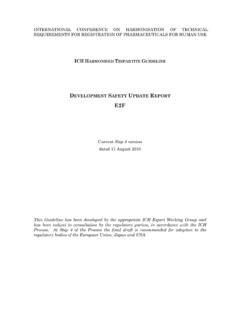
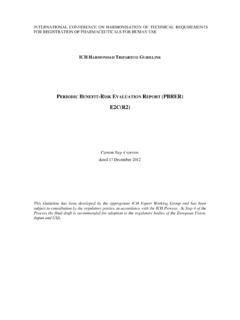
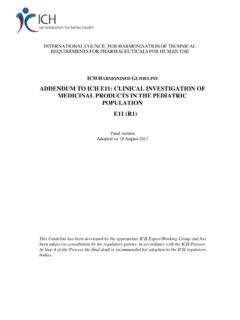
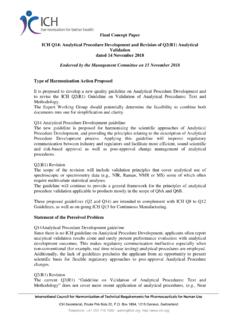
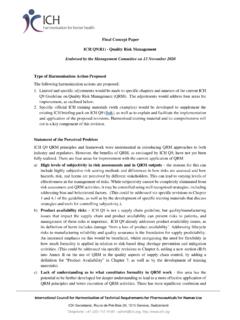
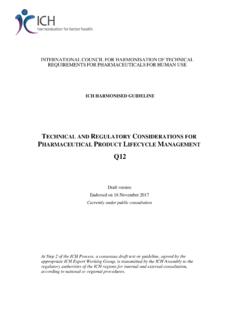
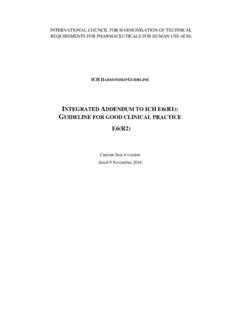
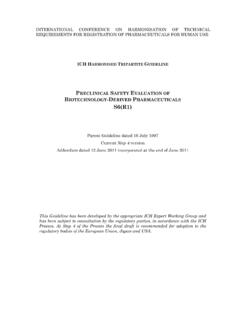
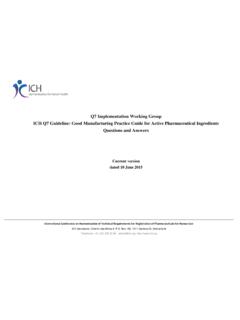
![[ICH E2F] [EXAMPLE DSUR – PHASE III INVESTIGATIONAL …](/cache/preview/e/7/a/2/e/6/3/0/thumb-e7a2e63043c4463724e748eb98faa3a7.jpg)
